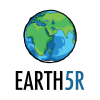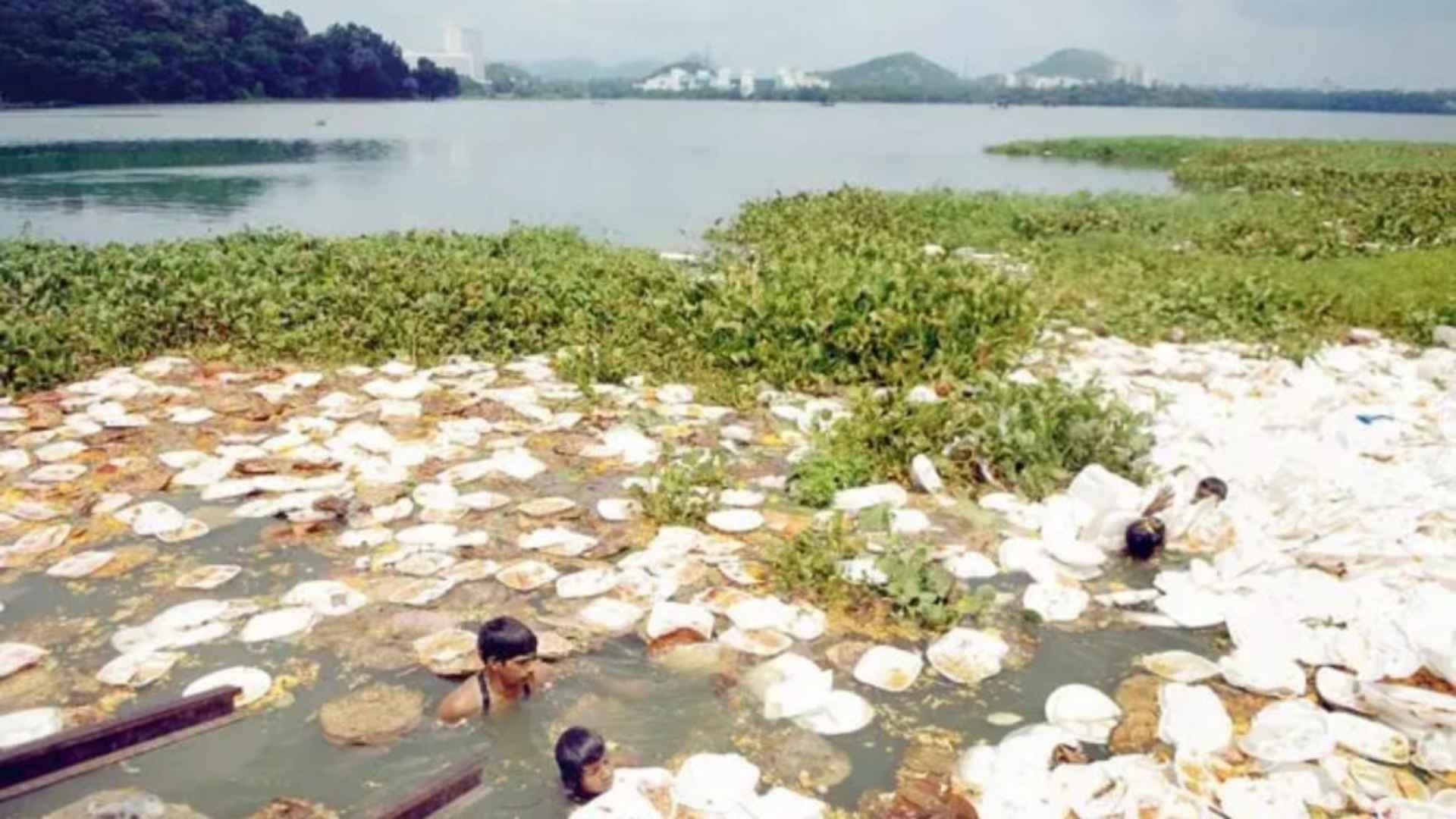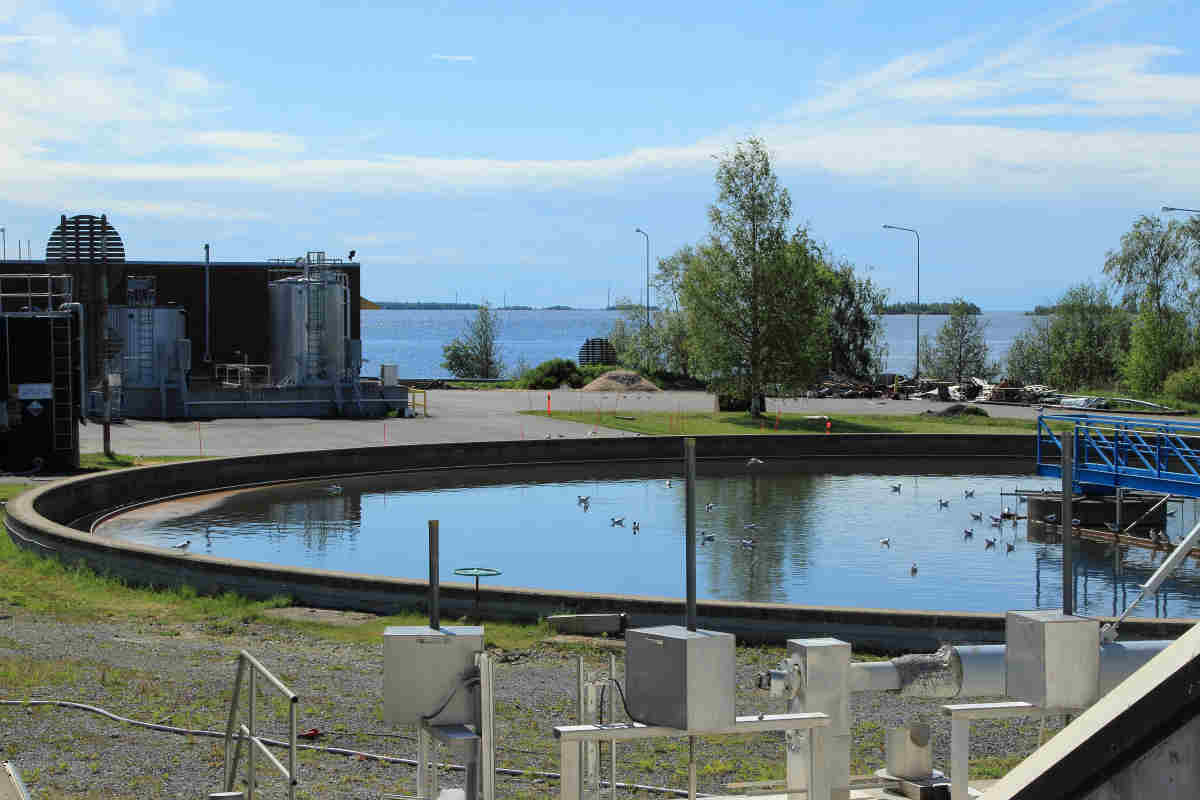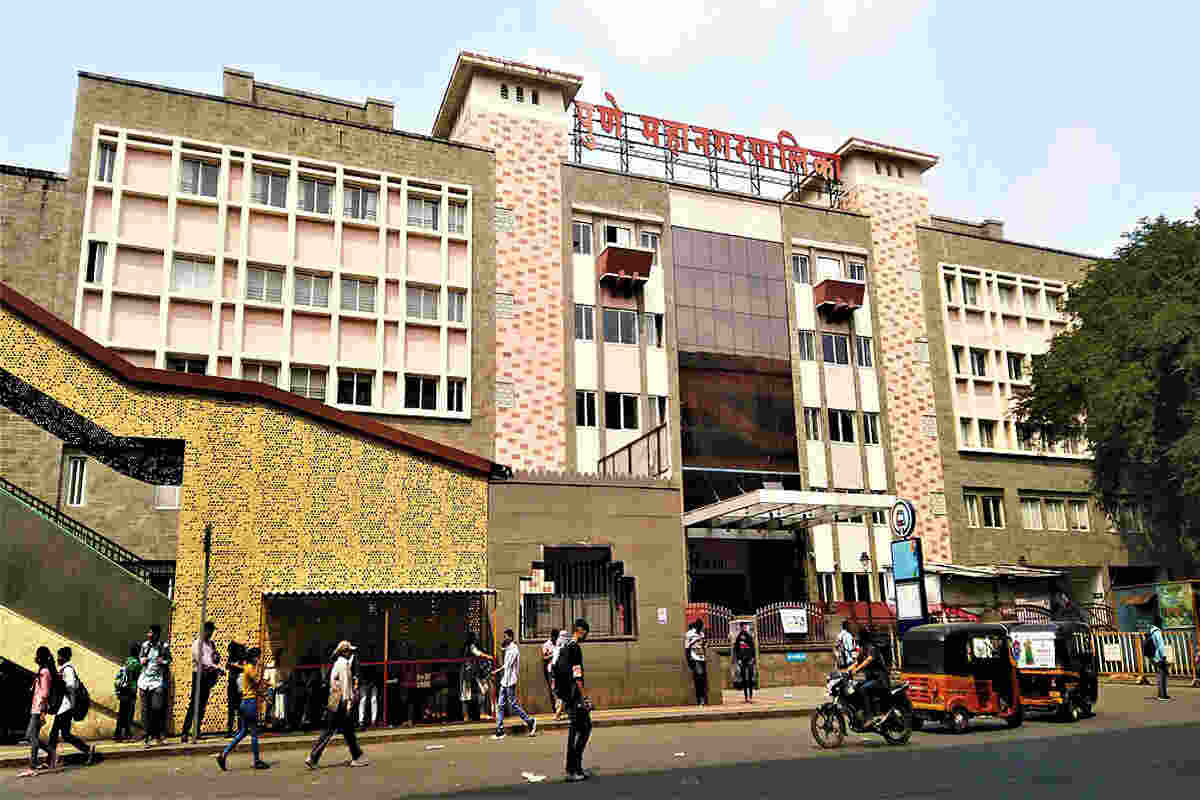Restoring Urban Lakes: A Community-Led Solution for Sustainable Water Management
In cities across the world, urban lakes are vanishing at an alarming rate, succumbing to pollution, encroachment, and neglect. According to a 2021 report by the Centre for Science and Environment (CSE), over 70% of urban lakes in India are heavily polluted, making them unfit for human consumption and threatening aquatic biodiversity.
In Bengaluru alone, once known as the ‘City of Lakes,’ more than 85% of its lakes are contaminated with sewage and industrial effluents, turning them into toxic cesspools. This widespread degradation of lakes is not just an environmental issue—it has far-reaching consequences on public health, biodiversity, and urban resilience.
By empowering local communities with the knowledge, skills, and tools needed for effective lake restoration, Earth5R has demonstrated how grassroots action can drive tangible environmental change. Their model integrates scientific waste management, biodiversity revival, and social engagement to restore lakes into thriving ecosystems.
The Urban Lake Crisis: Unraveling the Causes and Consequences of Degradation
The causes of lake degradation are multifaceted, driven by both industrial activities and poor waste management practices. In many Indian cities, industrial effluents and untreated sewage are directly discharged into urban lakes. A study by the Indian Institute of Science (IISc) revealed that Bengaluru’s Bellandur Lake receives over 500 million liters of untreated sewage daily, turning its once-clear waters into a toxic soup of heavy metals and pollutants.
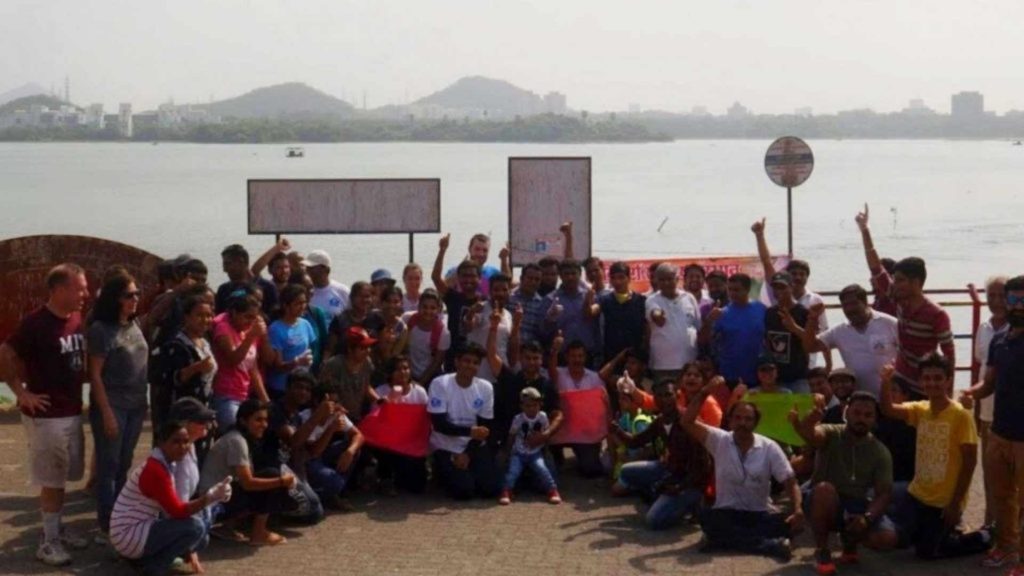
Encroachment and real estate expansion further exacerbate the problem. In rapidly growing cities, lake boundaries are illegally altered to make way for commercial and residential properties.
For example, in Hyderabad, the once-sprawling Hussain Sagar Lake has lost over 40% of its original area to encroachment. Concrete structures built over natural drainage channels disrupt the lake’s hydrology, preventing water flow and reducing its capacity to recharge groundwater aquifers.
The consequences of this degradation are far-reaching. Biodiversity loss is one of the most immediate impacts. As water quality deteriorates, fish populations decline, and aquatic vegetation withers, depriving migratory birds of their feeding and breeding grounds. The Loktak Lake in Manipur, once home to a rich variety of flora and fauna, has witnessed a 60% decline in bird species due to water pollution and shrinking wetland zones.
Groundwater depletion and disrupted hydrological cycles are another significant consequence. When lakes are filled with sewage and debris or encroached upon, they lose their ability to recharge groundwater aquifers, exacerbating water scarcity issues in cities.
The Earth5R Lake Restoration Framework – A Step-by-Step Guide to Sustainable Water Body Revival
The first phase of the framework—Research and Assessment—focuses on understanding the lake’s existing condition through scientific evaluation. Earth5R’s teams begin by conducting water quality analysis, testing for critical parameters such as Biochemical Oxygen Demand (BOD), Chemical Oxygen Demand (COD), pH levels, and heavy metal concentration.
Collaborations with schools and colleges are particularly impactful, as they not only foster awareness among the youth but also mobilize students as sustainability ambassadors. During the Varthur Lake restoration in Bengaluru, Earth5R partnered with local colleges, turning the initiative into an educational platform where students learned about lake ecology, waste management, and water conservation.
Once the initial research is complete, Earth5R sets clear, measurable goals. These include reducing waste accumulation, improving water quality metrics, and reviving biodiversity. The team establishes scientific benchmarks, such as reducing BOD and COD by at least 30% over six months and tracking the return of native plant and fish species as indicators of ecological recovery.
The next critical phase—Community Mobilization and Education—focuses on empowering local residents with knowledge and tools to support lake conservation. Awareness campaigns are conducted through workshops in schools, residential societies, and local parks, educating children and adults about the ecological significance of lakes and the consequences of pollution.
To maximize outreach, Earth5R uses digital platforms and interactive events. Through social media campaigns, eco-contests, and online quizzes, the initiative engages children and parents alike, turning lake restoration into a participatory community movement. During the Dharavi plastic cleanup drive, Earth5R organized a “Green Points” initiative, where participants earned redeemable points for their environmental actions, encouraging more people to get involved.
The third phase—Execution of the Restoration Drive—focuses on physically rejuvenating the lake, combining manual cleanup efforts with eco-engineering interventions. Volunteers remove plastic debris, invasive plants, and silt from the lakebed to restore natural water flow. In lakes with excessive sludge buildup, Earth5R deploys desilting equipment, using both manual and mechanical techniques to restore the lake’s depth and water capacity.
Throughout the cleanup, eco-friendly practices are strictly followed. Volunteers use biodegradable collection bags and ensure that the waste is properly sorted for recycling and disposal. For instance, during the Mithi River cleanup, Earth5R ensured that over 60% of the collected waste was diverted for recycling, reducing landfill contribution.
Finally, to address water contamination, Earth5R employs bio-remediation techniques, using microbial agents to break down pollutants. In lakes suffering from low oxygen levels, floating aerators are installed to increase dissolved oxygen content, fostering a healthier aquatic environment. During the Ulsoor Lake restoration in Bengaluru, such techniques significantly reduced water turbidity and boosted fish populations within months.
Earth5R’s lake restoration framework offers a powerful blueprint for community-led water conservation. By combining scientific interventions, public participation, and sustainable practices, it not only revives urban lakes but also empowers communities to become long-term stewards of their natural resources.
Measuring Impact and Ensuring Sustainability: The Key to Long-Term Lake Restoration
The first and most critical aspect of impact measurement is regular water quality testing, which provides scientific evidence of ecological improvement. Earth5R conducts periodic assessments of the lake’s chemical and biological parameters, tracking metrics such as Biochemical Oxygen Demand (BOD), Chemical Oxygen Demand (COD), pH levels, and turbidity.
A reduction in BOD and COD indicates lower levels of organic pollutants, signaling healthier water quality. For example, during the Ulsoor Lake restoration in Bengaluru, Earth5R recorded a 40% decrease in COD levels over six months, resulting in significantly clearer water and a visible reduction in algae blooms.
The restoration team also measures water clarity using Secchi disk readings, a method that evaluates how deep sunlight penetrates the water. Improved transparency often correlates with lower pollution levels and better aquatic health. Consistent water quality monitoring not only demonstrates the effectiveness of the cleanup efforts but also helps identify any recurring pollution sources, allowing for swift corrective actions.
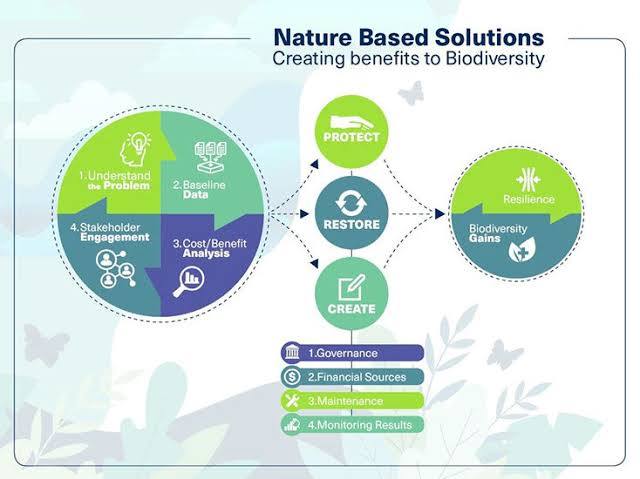
This infographic highlights the principles of Nature-Based Solutions (NBS) for biodiversity restoration, emphasizing protection, restoration, and creation through governance, financial support, and monitoring.
In many lake restoration projects, the revival of specific indicator species—such as dragonflies, frogs, or migratory birds—signals a restored ecological balance. For instance, after the Varthur Lake restoration in Bengaluru, Earth5R documented a resurgence of indigenous fish species, marking a substantial improvement in the lake’s aquatic biodiversity.
To ensure that the lake restoration effort remains sustainable, Earth5R implements long-term community stewardship programs. The organization establishes “Lake Guardian Groups”, composed of local residents, school eco-clubs, and college students, who take on the responsibility of monitoring and maintaining the lake. These groups organize quarterly cleanup drives, ensuring that the lake remains free of waste and invasive plants.
For instance, during the Vasai Lake restoration, Earth5R hosted monthly digital awareness sessions, reaching over 5,000 participants across India. This ongoing digital outreach ensures that lake conservation remains an active topic of public discourse, fostering continued community involvement.
Earth5R’s focus on sustainability transforms lake restoration into a self-sustaining community movement. The long-term impact is evident in the revival of aquatic biodiversity, improved water quality, and empowered local communities that actively participate in preserving their natural resources.
Case Studies from Earth5R : Real Life impacts
While Earth5R’s website does not feature an article titled “Earth5R’s Community-Led Lake Restoration Framework: A Scalable Model for Urban Water Bodies,” several of their initiatives and articles provide valuable insights into community-driven environmental restoration efforts that can be applied to urban lake restoration. Here are some relevant resources:
The Complete Guide to Conducting Sustainability Workshops
This article discusses Earth5R’s engagement with local citizens in weekly lake cleanup and plantation events, aiming to restore and sustain local ecosystems. Each plantation event resulted in the addition of approximately 800 trees, enhancing the area’s green cover. These activities not only improved environmental health but also fostered community bonding and a shared sense of responsibility toward nature conservation.
Earth5R’s Mithi River Community Cleanup Model
This comprehensive guide outlines Earth5R’s systematic approach to restoring Mumbai’s Mithi River. The strategy combines scientific research, community mobilization, and sustainable waste management to create a replicable blueprint for river restoration. By engaging local communities and stakeholders, Earth5R demonstrates how collaborative efforts can lead to significant environmental improvements.
Step-by-Step Action Plan for Sustainable Plastic Clean-up Drives
This article details Earth5R’s innovative approach to restoring Mumbai’s Mithi River, focusing on circular economy principles and sustainable planning. The initiative ensures that collected plastic waste does not end up in landfills but is reintegrated into the economy to generate income for local communities, demonstrating a sustainable model for environmental restoration.
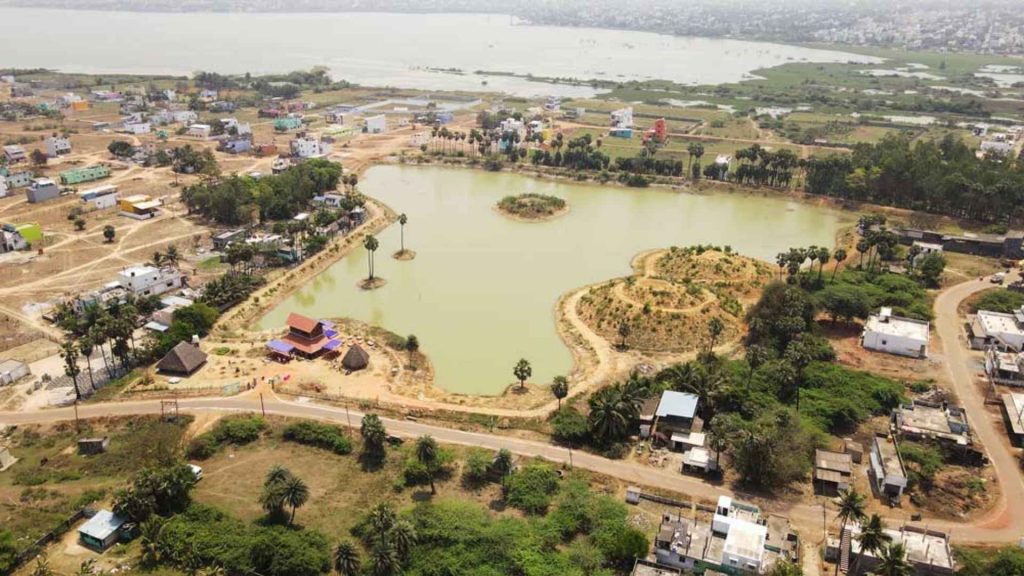
Benefits and Broader Implications: The Far-Reaching Impact of Community-Led Lake Restoration
One of the most significant environmental benefits of community-led lake restoration is the substantial improvement in water quality and biodiversity. Lakes that were once choked with plastic waste, sewage, and chemical pollutants gradually transform into cleaner and healthier ecosystems.
The removal of invasive plants and plastic waste not only clears the water but also restores the lake’s natural flow, preventing stagnation and algal blooms. During the Powai Lake restoration in Mumbai, Earth5R’s initiative significantly reduced Biochemical Oxygen Demand (BOD), resulting in clearer water and improved oxygenation levels.
The return of native fish, birds, and aquatic plants is a strong indicator of ecological revival. In restored lakes, it is common to see migratory birds returning during seasonal changes, signaling the lake’s restored ecological balance.
For example, after the Kaikondrahalli Lake restoration in Bengaluru, native fish populations rebounded, and the lake became a frequent stopover for migratory birds, contributing to regional biodiversity.
According to a study by the Indian Institute of Science (IISc), restored lakes in Bengaluru increased groundwater levels by 25%, reducing the city’s dependence on external water sources. Such ecological benefits enhance urban climate resilience, reducing the impact of droughts and floods.
Earth5R’s restoration framework is not just impactful—it is also highly scalable and replicable. The modular and adaptable nature of the model allows it to be implemented across diverse regions with varying ecological conditions. By collaborating with local NGOs, schools, and municipal bodies, the framework can be customized to meet the specific needs of different urban lakes.
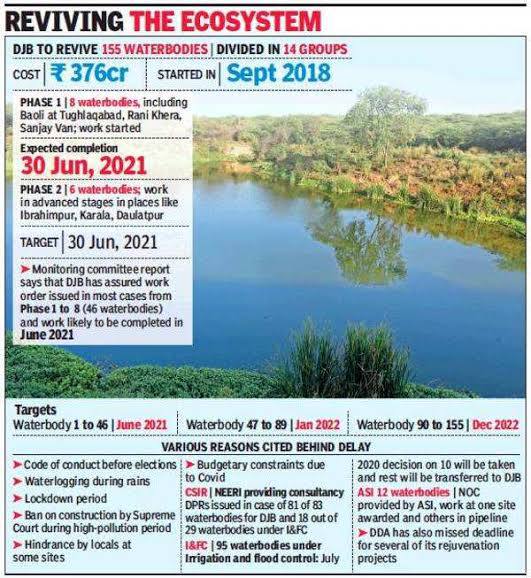
This visual outlines Delhi Jal Board’s (DJB) project to revive 155 waterbodies, detailing the phases, targets, and challenges, including delays caused by COVID-19 and regulatory constraints.
For instance, Earth5R’s Mithi River model—which successfully reduced pollution levels and restored biodiversity—has been replicated in several other polluted water bodies across India, demonstrating its scalability.
In recent years, several companies have invested in lake conservation projects as part of their CSR initiatives, contributing funding, manpower, and technical expertise. For example, Infosys partnered with the NGO SayTrees to restore a lake in Bengaluru, demonstrating the potential for corporate collaboration in large-scale water conservation efforts.
Ultimately, Earth5R’s community-led lake restoration model is more than just an environmental project—it is a movement towards sustainable urban living. By combining scientific strategies, community engagement, and long-term sustainability measures, this framework offers a replicable solution to the global water crisis.
Empowering Communities to Restore Urban Lakes for a Sustainable Future
The restoration of urban lakes is no longer a luxury—it is a necessity. As cities expand and water bodies face the brunt of pollution, encroachment, and neglect, the need for community-driven solutions becomes ever more critical. The Earth5R Community-Led Lake Restoration Framework offers a scalable and scientifically backed solution that not only revives dying lakes but also fosters environmental stewardship, social cohesion, and long-term sustainability.
One of the key takeaways from this model is the transformative power of community ownership. When local residents, schools, and businesses are actively involved in lake restoration, they become long-term custodians of their natural resources.
This sense of shared responsibility creates a ripple effect—families start practicing better waste management, schools incorporate environmental education, and local businesses support sustainability initiatives. The success of the Powai Lake restoration in Mumbai, where Earth5R mobilized thousands of volunteers and empowered local students, is a testament to the impact of collective action.
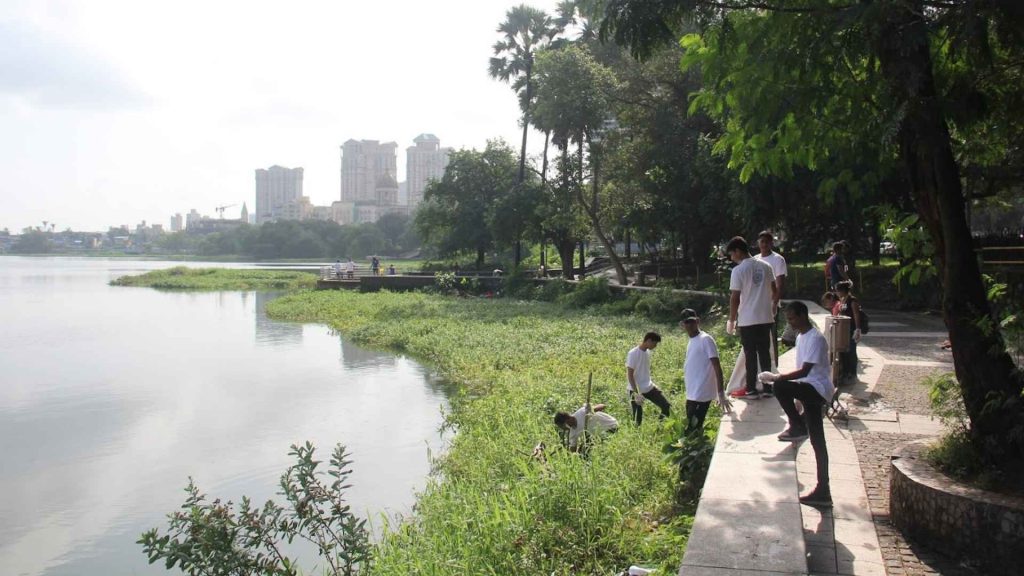
Earth5R’s framework also demonstrates that lake restoration is not just about cleaning water bodies—it is about creating healthier, more resilient urban ecosystems. Restored lakes recharge groundwater, prevent urban flooding, and support biodiversity, making cities more climate-resilient.
Ultimately, Earth5R’s community-led lake restoration framework is more than just an environmental initiative—it is a catalyst for systemic change. It demonstrates that with scientific planning, community involvement, and sustained efforts, even the most polluted lakes can be revived into thriving ecosystems.
FAQs on Earth5R’s Community-Led Lake Restoration Framework: A Scalable Model for Urban Water Bodies
What is Earth5R’s Community-Led Lake Restoration Framework?
Earth5R’s Community-Led Lake Restoration Framework is a sustainable and replicable model designed to restore urban lakes through active community participation, scientific interventions, and long-term sustainability strategies.
Why is community involvement essential for lake restoration?
Community involvement ensures long-term sustainability by fostering a sense of ownership and responsibility. When local residents, parents, and students actively participate, they are more likely to monitor and protect the lake from future degradation. Community-led efforts also drive behavioral changes, such as improved waste management practices and reduced pollution, making restoration efforts more effective and enduring.
What are the main causes of urban lake degradation?
Urban lakes face degradation due to untreated sewage discharge, industrial waste, and plastic pollution. Encroachment and real estate expansion reduce the lake’s size and buffer zones, while mismanagement and apathy lead to neglect. Chemical runoff from agriculture, construction debris, and illegal dumping also contribute to water contamination and biodiversity loss.
How does Earth5R assess the condition of a lake before starting restoration?
Earth5R begins with a scientific assessment phase, which includes water quality testing, pollution mapping, and biodiversity analysis. Parameters such as Biochemical Oxygen Demand (BOD), Chemical Oxygen Demand (COD), pH levels, and heavy metal content are tested to determine the lake’s health.
What scientific methods does Earth5R use for lake restoration?
Earth5R employs eco-friendly scientific methods such as bio-remediation, floating wetlands, and desilting techniques. Bio-remediation uses natural agents (bacteria, fungi, or plants) to break down pollutants, while floating wetlands filter contaminants and enhance oxygen levels. Additionally, aerators and microbial inoculation are used to improve water quality and restore ecological balance.
How does Earth5R engage local communities in lake restoration projects?
Earth5R organizes awareness workshops, educational programs, and community events to engage locals. They collaborate with schools, colleges, and NGOs, encouraging students to become sustainability ambassadors. These ambassadors spread awareness through digital platforms, eco-campaigns, and door-to-door interactions, creating a ripple effect of environmental consciousness.
What role do volunteers play in Earth5R’s lake restoration framework?
Volunteers are vital in executing the on-ground restoration activities. They participate in clean-up drives, waste segregation, native plantation efforts, and biodiversity monitoring. Volunteers are also trained in safety protocols and eco-friendly practices to ensure effective and responsible participation.
How does Earth5R ensure the safe disposal of waste collected during cleanups?
During cleanups, waste is segregated on-site into biodegradable, non-biodegradable, and hazardous waste. Biodegradable waste is composted, while recyclable waste is sent to authorized recycling facilities. Hazardous waste is disposed of through scientifically approved methods, ensuring minimal environmental impact.
How does Earth5R measure the impact of its restoration initiatives?
Earth5R uses scientific data collection and analysis to measure impact. This includes regular water quality testing, biodiversity monitoring, and waste collection data. Improvements in BOD, COD, and dissolved oxygen levels indicate enhanced water quality, while the return of aquatic life demonstrates biodiversity recovery. Community surveys also gauge public satisfaction and behavioral changes.
How does lake restoration benefit local biodiversity?
Lake restoration promotes the return of native species, such as fish, frogs, and aquatic plants, which thrive in cleaner water. The reintroduction of native vegetation around the lake improves habitat quality, providing shelter and food for birds and pollinators. Increased biodiversity strengthens the lake’s ecological resilience.
What are the long-term benefits of community-led lake restoration?
Long-term benefits include improved water quality, enhanced biodiversity, and reduced urban flooding. Restored lakes contribute to groundwater recharge, mitigating water scarcity issues. Additionally, community participation fosters environmental responsibility, making future conservation efforts more sustainable.
Can Earth5R’s lake restoration model be replicated in other urban areas?
Yes, Earth5R’s framework is designed to be scalable and replicable. It can be adapted to different lake sizes, pollution levels, and urban settings. By collaborating with local authorities and NGOs, the model can be implemented in other cities or regions facing water body degradation.
What role do schools and colleges play in Earth5R’s restoration framework?
Schools and colleges actively participate through educational programs, student-led awareness campaigns, and volunteer initiatives. Students are trained as sustainability ambassadors, spreading environmental awareness in their communities. Educational institutions also provide social service credits to students involved in the restoration efforts.
How does Earth5R use technology in lake restoration?
Earth5R uses its award-winning mobile app to engage communities and track restoration progress. The app allows volunteers to report pollution hotspots, share data, and monitor ongoing activities. Digital tools also facilitate real-time data collection and public engagement.
How does Earth5R promote eco-literacy through lake restoration?
Earth5R conducts environmental literacy programs in schools and local communities, educating people on water conservation, waste management, and biodiversity preservation. By incorporating scientific concepts into workshops, Earth5R promotes informed environmental action among students, parents, and teachers.
What challenges does Earth5R face during lake restoration projects?
Earth5R encounters challenges such as community resistance, logistical issues, and inconsistent policy enforcement. Lack of community awareness or initial skepticism can hinder participation. Additionally, waste transportation, regulatory approvals, and weather conditions can create logistical hurdles, which Earth5R addresses through collaborative partnerships and adaptive strategies.
How does lake restoration contribute to climate resilience?
Restoring urban lakes improves climate resilience by reducing heat islands, enhancing water retention, and preventing flooding. Healthier lakes contribute to groundwater recharge, mitigating the effects of drought. Additionally, increased vegetation around the lakes helps absorb carbon dioxide, reducing the urban carbon footprint.
What role does policy advocacy play in sustaining lake restoration efforts?
Earth5R collaborates with local governments and policymakers to promote sustainable water management practices. They advocate for stricter regulations on waste disposal, anti-encroachment measures, and improved sewage treatment policies. Their data-driven reports are used to influence environmental policies and enforcement.
How can individuals support or participate in Earth5R’s lake restoration initiatives?
Individuals can volunteer for cleanup drives, participate in educational workshops, and promote awareness through social media. They can also use Earth5R’s mobile app to report pollution issues and support local advocacy efforts. Schools and colleges can collaborate with Earth5R to organize lake restoration events and incorporate sustainability education into their curriculum.
Call to Action: Empowering Communities to Restore and Protect Urban Lakes
The degradation of urban lakes is not just an environmental issue—it is a collective responsibility that demands immediate and sustained action. As parents and teachers, you hold the power to influence young minds and inspire the next generation of eco-conscious citizens. By initiating or supporting local lake restoration efforts, you can contribute to creating healthier, cleaner, and more resilient urban ecosystems.
There are several ways to get involved. You can partner with organizations like Earth5R, which offers structured, community-driven frameworks for lake restoration. Join or organize cleanup drives, participate in educational workshops, and encourage your students or children to become environmental ambassadors.
Schools can integrate lake restoration programs into their curriculum, offering students practical, hands-on experience in sustainability practices. Additionally, collaborating with local NGOs, resident welfare associations, and municipal bodies can help scale your impact and ensure long-term success.
Support through digital platforms is equally powerful. You can amplify awareness by sharing information on social media, promoting success stories, and motivating others to participate. Earth5R’s mobile app offers a practical way to engage, report pollution hotspots, and track restoration progress in real time. By contributing digitally or on-ground, you become an essential part of the movement to reclaim urban water bodies.
– Authored by Mridu Mishra
